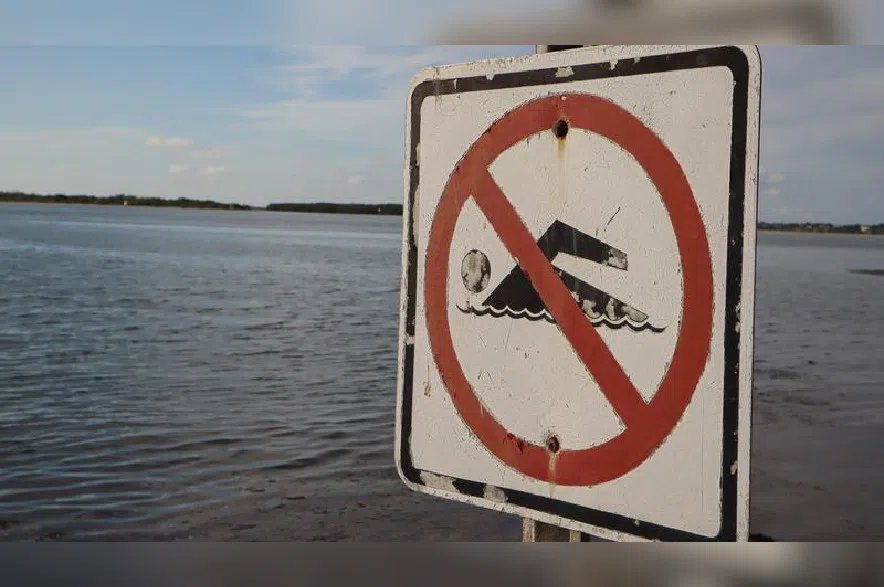The public has been advised not to swim in certain parts of Emma Lake, north of Prince Albert, after high levels of a harmful bacteria were found.
E. coli, an intestinal bacterium found in humans and other mammals, was detected at Sunnyside Beach. The presence of the bacteria in water indicates fecal contamination, which can pose health risks like stomach upset, skin rashes, wound infections, sore throats, and eye and ear infections.
Read more:
- This Saskatoon nonprofit gives $30K service dogs away for free
- Safety expert says incidents like Saskatoon crane collapse are ‘preventable’
- Why Canada may not be ready for ‘new reality’ of flash flooding and severe storms
An advisory issued by the Saskatchewan Health Authority’s environmental public health department said certain strains of E. coli can lead to serious complications such as bloody diarrhea, kidney failure or, in rare cases, death. Young children, the elderly, and individuals with weakened immune systems are at the highest risk.
It’s not known what the exact cause of the E.coli contamination at Sunnyside Beach was, but common sources include storm sewers, leaky septic tanks, farm manure runoff or heavy rainstorms that can carry animal feces from pets and wildlife into rivers and lakes.
“E.coli can thrive in beach sand, where wave action or beachgoers may transfer the bacteria from sand into the water, increasing the risk of exposure and infection for swimmers,” read the advisory.
The public was advised to check the latest beach quality report for updates.
Ongoing lake quality monitoring
Water quality at Emma Lake has been a growing concern for local residents and is being monitored by the District of Lakeland on an ongoing basis.
A recent meeting brought together members of the public, environmental experts and government agencies to discuss pressing issues and solutions around water quality and shoreline management.
One of the big concerns at Emma Lake is the increase in northern watermilfoil – a plant that can form dense mats that interfere with recreational activities like swimming and boating, and can also negatively impact native plant and animal life.
According to the meeting summary, the eutrophication of Emma Lake was also discussed. Eutrophication is the process where water bodies become excessively enriched with nutrients, which can disrupt the natural balance of the aquatic ecosystems. Human activities can greatly speed up the process.
Wayne Hyde is a member of the environmental advisory committee that has been helping to monitor the water quality at Emma Lake for years. The committee is currently working with Saskatchewan Polytechnic on a nutrient study of the lake. Hyde said there are several factors affecting the lake’s quality, including management of aquatic plants, fertilizer use and boats of all types kicking up sediment at the bottom of the lake.
“We have the Navigation Canada rule where you’re supposed to be limited to no more than 30 kilometres per hour within 100 metres of shore, but it’s hard to police that,” said Hyde.
“All boats travelling in shallow waters and creating waves are bringing sediments in off the shorelines and introducing nutrients. A boat with 10 horsepower, its disturbance will go down up to 10 feet, so they’re stirring up sediments that may otherwise be dormant. When those nutrients hit the water, when the water is warmer and sunlight is shining, you’ll get the blooms and extra weed growth.”
Hyde said he believes construction on the lakefront has also been a contributing factor to the water quality issues. Not using silt fences during construction and introducing sediments from clear-cutting are also issues, he added.
“Another thing we’ve done since 2018 is a migratory bird count throughout the Emma Lake area. We’re just trying to follow them to see if there’s any changes to the water quality,” he said.
Emma Lake isn’t the only body of water to see changes, particularly with weed and algae growth. Research has shown algae blooms are becoming more intense in lakes across Saskatchewan.











